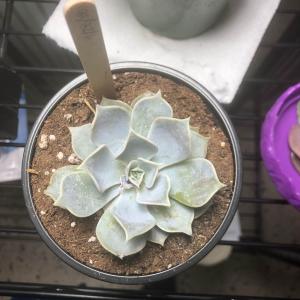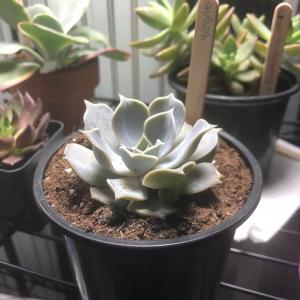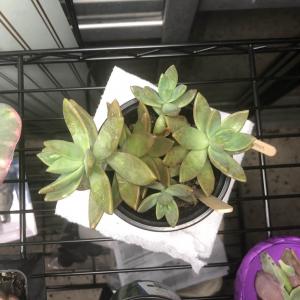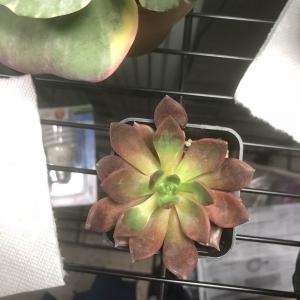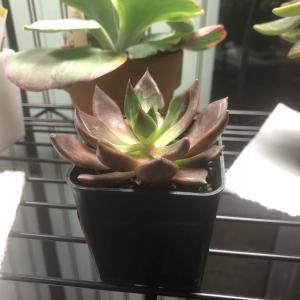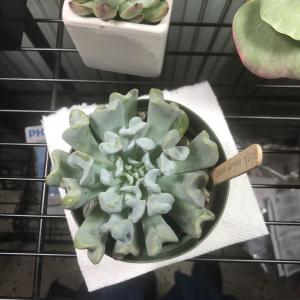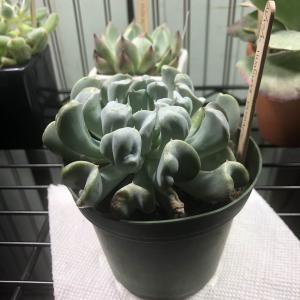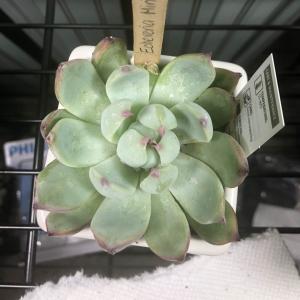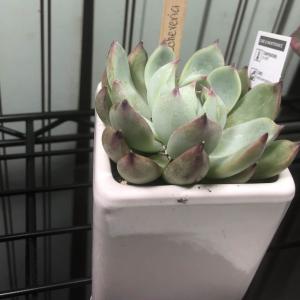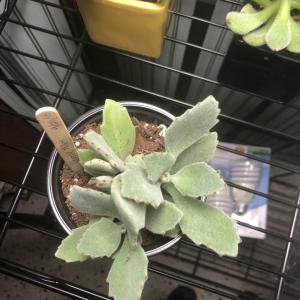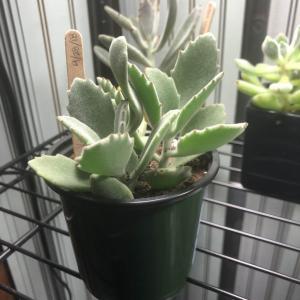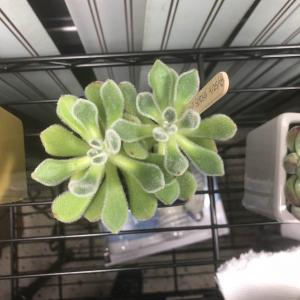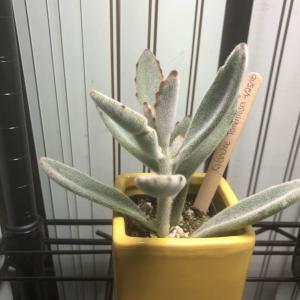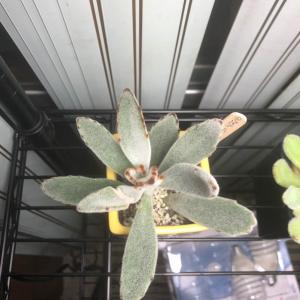文章
Miss Chen
2018年05月03日

Description: This perennial plant is about 2-3' tall, branching occasionally. This member of the Nettle family lacks stinging hairs. The stems are light green, 4-angled or round, and glabrous or slightly pubescent. The leaves are usually opposite along the stems, but sometimes they are alternate. They are ovate or ovate-lanceolate, up to 4" long and 2½" across, and have long slender petioles. The upper surface of each leaf is dark green (in the shade) and glabrous or slightly pubescent; a central vein and 2 parallel secondary veins are readily observable. The margins are coarsely serrated. Spikes of green or greenish white flowers appear from the axils of the upper leaves. They are straight and angle upward from the axis of the central stem. The flowering spikes are about ½–3" long; sometimes they are terminal, but more often they will develop additional leaves beyond the flowers. False Nettle is usually dioecious, with male and female flowers produced on separate plants. Male flowers are distributed along the spikes in bunches, while female flowers are produced along the spikes more or less continuously. These flowers are very small and lack petals. Each male flower has a 4-parted calyx and 4 stamens, while the calyx of the female flower is tubular with 2-4 teeth. The blooming period is mid-summer to early fall, and lasts about 1-2 months. There is no floral scent; pollination is by wind. The fruit consists of a small achene. This description applies to the typical woodland variety of False Nettle, Boehmeria cylindrica cylindrica. The other variety of False Nettle, Boehmeria cylindrica drummondiana, grows in the sun and has a somewhat different appearance.

Cultivation: The preference is light shade, moist conditions, and rich loamy soil. In sunnier locations, this plant prefers wetter ground and the foliage may become yellowish green.
Range & Habitat: The native False Nettle is a common plant that occurs in most counties of Illinois (see Distribution Map). Habitats include wet to mesic deciduous woodlands, especially in floodplain and bottomland areas, as well as various wetlands, including swamps, low areas along rivers, borders of small streams, seeps, and sandy marshes. False Nettle can be found in both degraded and higher quality habitats.
Faunal Associations: The flowers don't attact many insects because they are wind-pollinated. Caterpillars of the butterflies Polygonia comma (Comma), Polygonia interrogationis (Question Mark), and Vanessa atalanta (Red Admiral) feed on the foliage of False Nettle; caterpillars of the moth Bomolocha manalis (Flowing-Line Bomolocha) also feed on this plant (Wagner, 2005; Bouseman & Sternburg, 2001). Larvae of a fly, Neolasioptera boehmeriae, form spindle-shaped galls on the stems. Because the foliage lacks stinging hairs and it is non-toxic, mammalian herbivores probably browse on this plant occasionally.
Photographic Location: Along a woodland path at Busey Woods in Urbana, Illinois.
Comments: Sometimes people instinctively shy away from this plant thinking that it has stinging hairs – in fact, this is not the case, hence the common name. In Illinois, the two members of the Nettle family with stinging hairs are Laportea canadensis (Wood Nettle) and Urtica dioica (Stinging Nettle). The latter species has been introduced from Europe. The other common member of the Nettle family without stinging hairs, Pilea pumila (Clearweed), is a hairless annual plant with translucent stems and shiny leaves. Clearweed has terminal flowering spikes that are usually shorter than the petioles of the leaves, while the flowering spikes of False Nettle are usually longer than the petioles, and leaves are often produced beyond the flowers.

Cultivation: The preference is light shade, moist conditions, and rich loamy soil. In sunnier locations, this plant prefers wetter ground and the foliage may become yellowish green.
Range & Habitat: The native False Nettle is a common plant that occurs in most counties of Illinois (see Distribution Map). Habitats include wet to mesic deciduous woodlands, especially in floodplain and bottomland areas, as well as various wetlands, including swamps, low areas along rivers, borders of small streams, seeps, and sandy marshes. False Nettle can be found in both degraded and higher quality habitats.
Faunal Associations: The flowers don't attact many insects because they are wind-pollinated. Caterpillars of the butterflies Polygonia comma (Comma), Polygonia interrogationis (Question Mark), and Vanessa atalanta (Red Admiral) feed on the foliage of False Nettle; caterpillars of the moth Bomolocha manalis (Flowing-Line Bomolocha) also feed on this plant (Wagner, 2005; Bouseman & Sternburg, 2001). Larvae of a fly, Neolasioptera boehmeriae, form spindle-shaped galls on the stems. Because the foliage lacks stinging hairs and it is non-toxic, mammalian herbivores probably browse on this plant occasionally.
Photographic Location: Along a woodland path at Busey Woods in Urbana, Illinois.
Comments: Sometimes people instinctively shy away from this plant thinking that it has stinging hairs – in fact, this is not the case, hence the common name. In Illinois, the two members of the Nettle family with stinging hairs are Laportea canadensis (Wood Nettle) and Urtica dioica (Stinging Nettle). The latter species has been introduced from Europe. The other common member of the Nettle family without stinging hairs, Pilea pumila (Clearweed), is a hairless annual plant with translucent stems and shiny leaves. Clearweed has terminal flowering spikes that are usually shorter than the petioles of the leaves, while the flowering spikes of False Nettle are usually longer than the petioles, and leaves are often produced beyond the flowers.
0
0
文章
Miss Chen
2018年05月03日

Description: This plant is a biennial that consists of a rosette of basal leaves during the first year. The basal leaves are up to 6" long and 2" across; they are oblanceolate or obovate, dentate along the margins, and hairy underneath. Each basal leaf tapers to a petiole-like base that is long and slender, while its tip is acute to blunt. During the second year, one or more stems with alternate cauline leaves develop from the center of the rosette, which withers away. Upon reaching maturity, Toothed Rock Cress is 1½–3' tall. The erect to ascending stems are light green, finely pubescent, terete, and sparingly branched. The cauline leaves are up to 4" long and 1½" across; they are oblanceolate to obovate and dentate along their margins. The upper surface of each cauline leaf is sparingly covered with fine hairs or hairless, while the lower surface is conspicuously hairy. Each cauline leaf clasps the stem with a pair of basal lobes (it is auriculate). The upper stems terminate in floral racemes up to 1' long.
Each flower is about 1/8" (3 mm.) across, consisting of 4 sepals, 4 petals, an ovary with a short style, and several stamens with pale yellow or white anthers. The petals are white and oblanceolate; they barely extend beyond the sepals. The sepals are lanceolate-oblong, light green to reddish green, and finely hairy. The pedicel of each flower is short, stout, and conspicuously hairy. The blooming period occurs during the late spring or early summer and lasts about a month. Each flower is replaced by a slender cylindrical silique about ¾–1½" long that contains a single row of seeds. The siliques are ascending to spreading along the central stalk of the raceme; they can be curved or straight, but don't droop conspicuously. The outer surface of each silique is light green to reddish purple and glabrous or finely pubescent (usually the latter). The seeds are quite small (about 1 mm. long), oblongoid, and somewhat flattened; they lack winged margins. The root system consists of a taproot. This plant spreads by reseeding itself.
Cultivation: This plant is typically found in dappled sunlight to medium shade, moist conditions, and either fertile loamy soil or thin rocky soil with decaying organic matter.

Range & Habitat: The native Toothed Rock Cress occurs occasionally in northern and central Illinois, while in the southern section of the state it is uncommon or absent (see Distribution Map). Habitats include moist to mesic deciduous woodlands, wooded floodplain areas along rivers, banks of small streams, rocky bluffs, and shaded limestone cliffs.
Faunal Associations: The small flowers attract various bees, Syrphid flies, dance flies (Empis spp.), and miscellaneous other insects. The bee visitors include cuckoo bees (Nomada spp.), Halictid bees, Andrenid bees, and little carpenter bees (Ceratina spp.). The bees suck nectar or collect pollen, while the flies suck nectar or feed on pollen. Some flea beetles (e.g., Phyllotreta conjuncta and Phyllotreta punctulata) feed on species of Rock Cress (Boechera spp. and related genera).
Photographic Location: A low wooded area along a river in Vermilion County, Illinois.

Comments: This is one of the woodland species of Rock Cress (Boechera spp. and related genera). As a group, they are usually tall-growing, but not very showy because of their small flowers. It can be somewhat tricky to distinguish these species and several physical characteristics should be considered. Toothed Rock Cress (Boechera dentata) has: 1) stems with pubescent hairs throughout, 2) terete siliques that are spreading to ascending (but not drooping nor stiffly erect), 3) auriculate leaves with basal lobes that clasp each stem throughout its length, and 4) very small flowers (about 1/8" or 3 mm. across). Other species of Rock Cress often have: 1) hairless stems or stems that are hairy only toward the bottom, 2) siliques that are flattened, droop downward, or are held stiffly erect, 3) cauline leaves that are sessile, or they have basal lobes that clasp each stem only toward the bottom, and 4) flowers that are slightly larger in size. Other scientific names of Toothed Rock Cress include Arabis dentata and Arabis shortii.
Each flower is about 1/8" (3 mm.) across, consisting of 4 sepals, 4 petals, an ovary with a short style, and several stamens with pale yellow or white anthers. The petals are white and oblanceolate; they barely extend beyond the sepals. The sepals are lanceolate-oblong, light green to reddish green, and finely hairy. The pedicel of each flower is short, stout, and conspicuously hairy. The blooming period occurs during the late spring or early summer and lasts about a month. Each flower is replaced by a slender cylindrical silique about ¾–1½" long that contains a single row of seeds. The siliques are ascending to spreading along the central stalk of the raceme; they can be curved or straight, but don't droop conspicuously. The outer surface of each silique is light green to reddish purple and glabrous or finely pubescent (usually the latter). The seeds are quite small (about 1 mm. long), oblongoid, and somewhat flattened; they lack winged margins. The root system consists of a taproot. This plant spreads by reseeding itself.
Cultivation: This plant is typically found in dappled sunlight to medium shade, moist conditions, and either fertile loamy soil or thin rocky soil with decaying organic matter.

Range & Habitat: The native Toothed Rock Cress occurs occasionally in northern and central Illinois, while in the southern section of the state it is uncommon or absent (see Distribution Map). Habitats include moist to mesic deciduous woodlands, wooded floodplain areas along rivers, banks of small streams, rocky bluffs, and shaded limestone cliffs.
Faunal Associations: The small flowers attract various bees, Syrphid flies, dance flies (Empis spp.), and miscellaneous other insects. The bee visitors include cuckoo bees (Nomada spp.), Halictid bees, Andrenid bees, and little carpenter bees (Ceratina spp.). The bees suck nectar or collect pollen, while the flies suck nectar or feed on pollen. Some flea beetles (e.g., Phyllotreta conjuncta and Phyllotreta punctulata) feed on species of Rock Cress (Boechera spp. and related genera).
Photographic Location: A low wooded area along a river in Vermilion County, Illinois.

Comments: This is one of the woodland species of Rock Cress (Boechera spp. and related genera). As a group, they are usually tall-growing, but not very showy because of their small flowers. It can be somewhat tricky to distinguish these species and several physical characteristics should be considered. Toothed Rock Cress (Boechera dentata) has: 1) stems with pubescent hairs throughout, 2) terete siliques that are spreading to ascending (but not drooping nor stiffly erect), 3) auriculate leaves with basal lobes that clasp each stem throughout its length, and 4) very small flowers (about 1/8" or 3 mm. across). Other species of Rock Cress often have: 1) hairless stems or stems that are hairy only toward the bottom, 2) siliques that are flattened, droop downward, or are held stiffly erect, 3) cauline leaves that are sessile, or they have basal lobes that clasp each stem only toward the bottom, and 4) flowers that are slightly larger in size. Other scientific names of Toothed Rock Cress include Arabis dentata and Arabis shortii.
0
0
文章
Miss Chen
2018年05月03日

Description: This perennial wildflower is 2-6' tall and usually unbranched. The central stem is light green to purplish green, terete, and glabrous. Opposite pairs of leaves about 3-8" long and 1-3" across occur along this stem; they are lanceolate-elliptic to ovate and smooth along their margins. Both the tips and bottoms of the leaves are wedge-shaped, rather than rounded. The upper leaf surface is medium to dark green and glabrous, while the lower surface is pale to medium green and glabrous (or nearly so). The leaves are widely spreading and remain more or less the same size along the stem. The distinct petioles are ½-2" long and light green. The foliage contains a milky latex.
The stem terminates in one or more umbels of flowers spanning 2-4" across. The umbels are relatively open and the flowers droop somewhat from their pedicels. Each flower is about ¼" across and ½" long, consisting of 5 petals that hang downward, 5 curved cylindrical hoods that surround a central column, and the reproductive organs. The insignificant sepals are hidden by the petals. Each hood has an exerted horn. The flowers are bicolored: the petals are green or pale purple, while the hoods and column are white or light pink. The slender pedicels are 1-2" long, light green, and either glabrous or minutely short-pubescent. The blooming period occurs during the summer for about a month. Afterwards, fertile flowers are replaced by erect seedpods (follicles) that are up to 6" long and ¾" across; they are narrowly lanceoloid in shape. During the fall, each seedpod splits open along one side to release its seeds. The seeds have tufts of hair at their apices; they are distributed by the wind. The root system consists of a taproot.

Cultivation: The preference is partial or dappled sunlight, mesic conditions, and a rich loam or sandy loam with organic matter. The location should be protected from prevailing winds.
Range & Habitat: Poke Milkweed is widely distributed across Illinois, but it is relatively uncommon. Illinois lies along the western range limit of this species. Habitats consist of woodland openings, rich mesic woodlands, sandy woodlands, upland rocky woodlands, wooded slopes, areas along paths in woodlands, and woodland borders. Poke Milkweed is found in deciduous woodlands where oaks, maples, and similar trees are dominant.
Faunal Associations: The flowers of Poke Milkweed attract bumblebees and butterflies, including the Monarch and Great Spangle Fritillary butterflies. These insects suck nectar from the flowers. Other insects feed on the foliage, flower tissues, seedpods, pith of the stems, or plant juices. The following beetles have been found on Poke Milkweed: Chrysochus auratus (Dogbane Beetle) and Labidomera clivicollis (Swamp Milkweed Leaf Beetle). Other insects that feed on milkweeds (Asclepias spp.) include larvae of Tetraopes basalis (Milkweed Longhorn) and Tetraopes tetrophthalmus (Red Milkweed Beetle), larvae of Rhyssomatus lineaticollis (Milkweed Stem Weevil), Lygaeus kalmii (Small Milkweed Bug) and Oncopeltus fasciatus (Large Milkweed Bug), Aphis asclepiadis and other aphids, caterpillars of the moths Cycnia inopinatus (Unexpected Cycnia) and Cycnia tenera (Delicate Cycnia), and caterpillars of the butterfly Danaus plexippus (Monarch). Mammalian herbivores usually avoid consumption of milkweeds because their foliage contains toxic cardiac glycosides and it is bitter-tasting.
Photographic Location: Along a path in a sandy woodland at the Indiana Dunes State Park in NW Indiana.
Comments: This is a tall-growing milkweed with unusual bicolored flowers. In Illinois, only Swamp Milkweed (Asclepias incarnata) and Common Milkweed (Asclepias syriaca) are as tall and their flowers are usually more unicolored. In some areas of the United States, Poke Milkweed has been known to hybridize with Common Milkweed, producing plants with intermediate characteristics. So far, such hybrid plants have not been observed in Illinois. The common name, Poke Milkweed, refers to a junior synonym of this species, Asclepias phytolaccoides. This latter scientific name was no doubt inspired by the superficial resemblance of this milkweed's leaves to those of an unrelated species, Pokeweed (Phytolacca americana).
The stem terminates in one or more umbels of flowers spanning 2-4" across. The umbels are relatively open and the flowers droop somewhat from their pedicels. Each flower is about ¼" across and ½" long, consisting of 5 petals that hang downward, 5 curved cylindrical hoods that surround a central column, and the reproductive organs. The insignificant sepals are hidden by the petals. Each hood has an exerted horn. The flowers are bicolored: the petals are green or pale purple, while the hoods and column are white or light pink. The slender pedicels are 1-2" long, light green, and either glabrous or minutely short-pubescent. The blooming period occurs during the summer for about a month. Afterwards, fertile flowers are replaced by erect seedpods (follicles) that are up to 6" long and ¾" across; they are narrowly lanceoloid in shape. During the fall, each seedpod splits open along one side to release its seeds. The seeds have tufts of hair at their apices; they are distributed by the wind. The root system consists of a taproot.

Cultivation: The preference is partial or dappled sunlight, mesic conditions, and a rich loam or sandy loam with organic matter. The location should be protected from prevailing winds.
Range & Habitat: Poke Milkweed is widely distributed across Illinois, but it is relatively uncommon. Illinois lies along the western range limit of this species. Habitats consist of woodland openings, rich mesic woodlands, sandy woodlands, upland rocky woodlands, wooded slopes, areas along paths in woodlands, and woodland borders. Poke Milkweed is found in deciduous woodlands where oaks, maples, and similar trees are dominant.
Faunal Associations: The flowers of Poke Milkweed attract bumblebees and butterflies, including the Monarch and Great Spangle Fritillary butterflies. These insects suck nectar from the flowers. Other insects feed on the foliage, flower tissues, seedpods, pith of the stems, or plant juices. The following beetles have been found on Poke Milkweed: Chrysochus auratus (Dogbane Beetle) and Labidomera clivicollis (Swamp Milkweed Leaf Beetle). Other insects that feed on milkweeds (Asclepias spp.) include larvae of Tetraopes basalis (Milkweed Longhorn) and Tetraopes tetrophthalmus (Red Milkweed Beetle), larvae of Rhyssomatus lineaticollis (Milkweed Stem Weevil), Lygaeus kalmii (Small Milkweed Bug) and Oncopeltus fasciatus (Large Milkweed Bug), Aphis asclepiadis and other aphids, caterpillars of the moths Cycnia inopinatus (Unexpected Cycnia) and Cycnia tenera (Delicate Cycnia), and caterpillars of the butterfly Danaus plexippus (Monarch). Mammalian herbivores usually avoid consumption of milkweeds because their foliage contains toxic cardiac glycosides and it is bitter-tasting.
Photographic Location: Along a path in a sandy woodland at the Indiana Dunes State Park in NW Indiana.
Comments: This is a tall-growing milkweed with unusual bicolored flowers. In Illinois, only Swamp Milkweed (Asclepias incarnata) and Common Milkweed (Asclepias syriaca) are as tall and their flowers are usually more unicolored. In some areas of the United States, Poke Milkweed has been known to hybridize with Common Milkweed, producing plants with intermediate characteristics. So far, such hybrid plants have not been observed in Illinois. The common name, Poke Milkweed, refers to a junior synonym of this species, Asclepias phytolaccoides. This latter scientific name was no doubt inspired by the superficial resemblance of this milkweed's leaves to those of an unrelated species, Pokeweed (Phytolacca americana).
0
0
成长记
sofiag
2018年05月02日

14 hours of light.
5/2/18

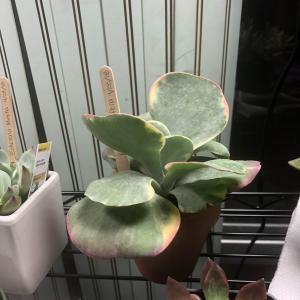
5/2/18


2
0
sofiag:@meriunkat AHHH thanks I will!
meriunkat:Dont forget to add Variegated in the plant name :)








